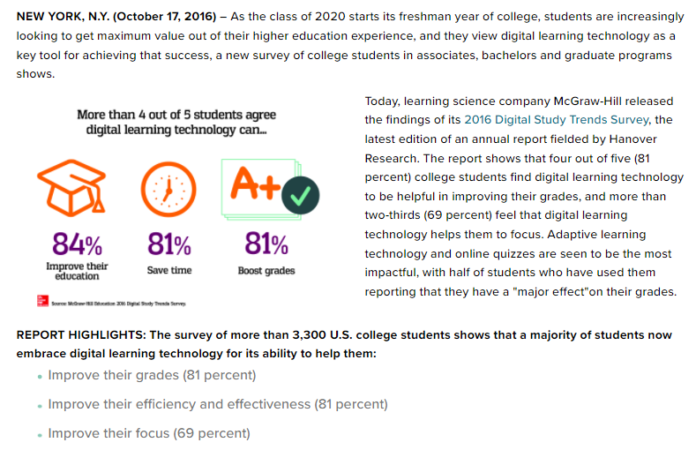Education has progressed radically throughout human history to help people earn a decent livelihood, enjoy life, and make the world a better place. The past few decades brought numerous improvements in this regard, especially with the rise of technology. So how did learning become smarter with the help of technological advancements? Students are becoming better analytical essay writers, smart learners, tech familiar, and much more. Let’s find out this below:
How Technology Makes Your Education Smarter? 5 ways:
Technology is slowly changing the face of schooling. It is making the learning experience more enjoyable for both teachers and students. To be sure, many would agree that technology has helped make schooling more accessible to the masses. But beyond accessibility, what does technology offer in terms of education? How does it make the learning experience smarter for both students and teachers to enhance learning using technology? Here are 5 ways how technology makes education smarter:
1. Technologies take learning beyond classroom walls:
- The learning process has moved beyond classrooms into a variety of settings, and that’s one of the main advantages of technology in schooling.
- You can easily access different educational materials using your gadget, so you’re learning takes place everywhere you go.
2. Technology enables better communication:
- Communication between students and teachers has always been important for the quality of the learning process. But it was not always easy to implement it effectively.
- Modern gadgets allow you to communicate faster and easier; you can use chat apps for immediate messaging or email for longer messages.
- This helps students save their time with better interaction and communication.
3. Virtual reality for education:
- Using VR for teaching takes things to the next level.
- It’s a perfect tool for instruction because it works as a real-life simulation of different situations, places, and opportunities.
- There are already some VR applications in teaching like;
- edX which uses Google Cardboard,
- 360-degree videos to provide its users with the real-life experience and understanding of different topics like science and medicine. And that’s only the beginning!
4. AR (Augmented Reality):
- AR (Augmented Reality) is a technology that overlays software graphics on top of a user’s perspective of the actual world. As a result, a composite view is provided.
- In other words, AR enhances one’s current perception of reality.
- It has changed the face of traditional teaching methods with innovative techniques.
5. Big Data:
- When educators can gather, analyze and generate useful insights from data about students, classroom interactions, school processes.
- They have an opportunity to improve their approaches to learning based on evidence, not on intuition.
- This is where big data comes into play. Big Data is being used to;
- Predict student success or failure;
- Identify learning difficulties;
- Track the progress of each student;
- Enhance personalized learning;
- Detect early signs of stress and anxiety in students;
- Facilitate predictive analytics by linking changes in weather or other environmental factors with student performance online.
Statistical Reference:
Education is more than just reading books, and it’s a pity that many institutions fail to recognize that it is more than a syllabus and a grade. A sound instruction may teach a youngster how to acquire knowledge as an adult, the kid can pursue autonomous learning. Additionally, schooling can teach a youngster how to think, ensuring that the youngster does not reach adulthood to be illiterate.
Technology has always been at the forefront of education since the first abacus was used for simple arithmetic, to the first electronic calculator which saved hours of math class by allowing students to get quick answers, saving time and allowing teachers to do more. Today’s technology has resources like graphs, charts, videos, and other ways that can enhance the learning experience.
Conclusion:
Hopefully, you now have a better understanding of how technology can make your education smarter, and how to use it in those ways. It will take a bit of trial and error, but once you figure out what works best for you, the sky’s the limit.












